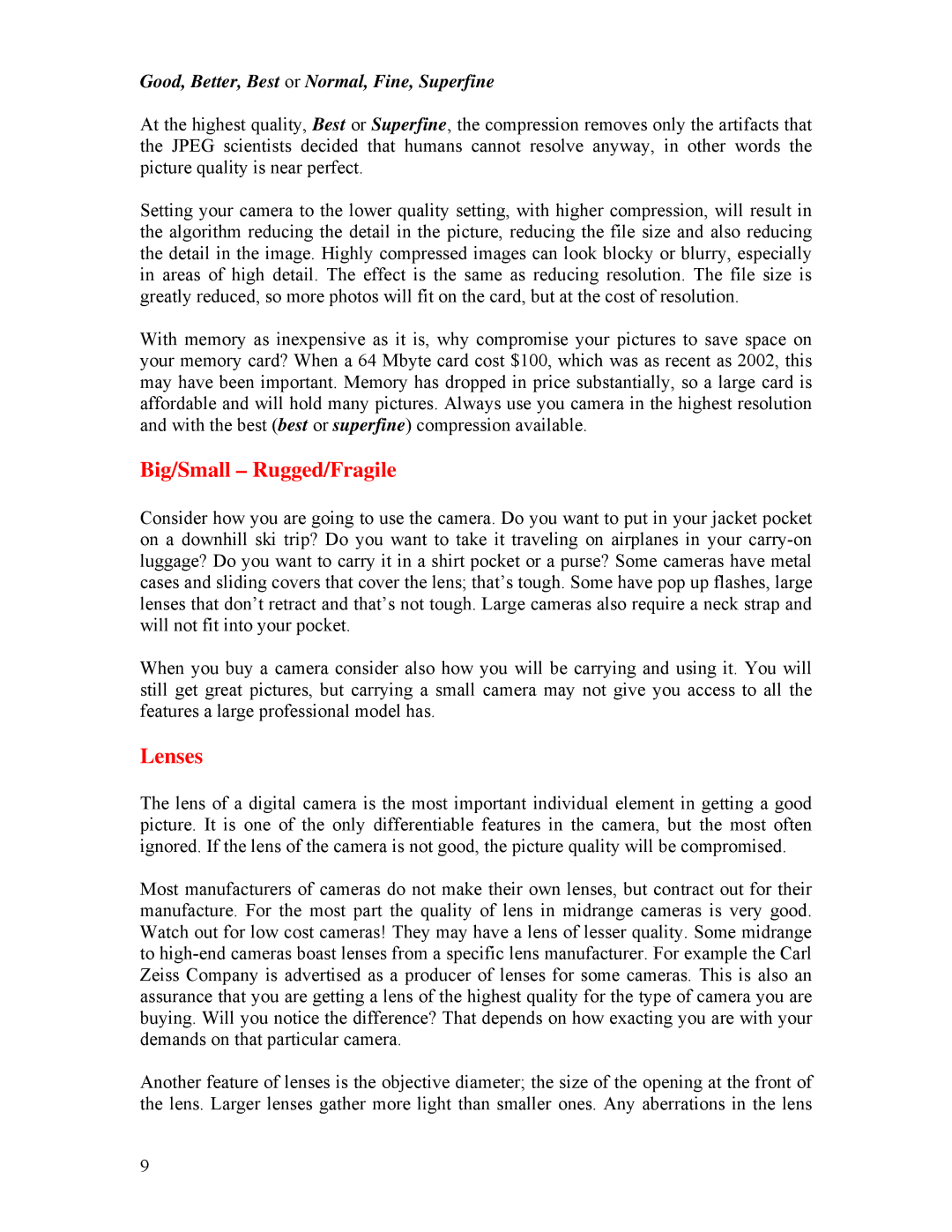Good, Better, Best or Normal, Fine, Superfine
At the highest quality, Best or the JPEG scientists decided picture quality is near perfect.
Superfine, the compression removes only the artifacts that that humans cannot resolve anyway, in other words the
Setting your camera to the lower quality setting, with higher compression, will result in the algorithm reducing the detail in the picture, reducing the file size and also reducing the detail in the image. Highly compressed images can look blocky or blurry, especially in areas of high detail. The effect is the same as reducing resolution. The file size is greatly reduced, so more photos will fit on the card, but at the cost of resolution.
With memory as inexpensive as it is, why compromise your pictures to save space on your memory card? When a 64 Mbyte card cost $100, which was as recent as 2002, this may have been important. Memory has dropped in price substantially, so a large card is affordable and will hold many pictures. Always use you camera in the highest resolution and with the best (best or superfine) compression available.
Big/Small – Rugged/Fragile
Consider how you are going to use the camera. Do you want to put in your jacket pocket on a downhill ski trip? Do you want to take it traveling on airplanes in your
When you buy a camera consider also how you will be carrying and using it. You will still get great pictures, but carrying a small camera may not give you access to all the features a large professional model has.
Lenses
The lens of a digital camera is the most important individual element in getting a good picture. It is one of the only differentiable features in the camera, but the most often ignored. If the lens of the camera is not good, the picture quality will be compromised.
Most manufacturers of cameras do not make their own lenses, but contract out for their manufacture. For the most part the quality of lens in midrange cameras is very good. Watch out for low cost cameras! They may have a lens of lesser quality. Some midrange to
Another feature of lenses is the objective diameter; the size of the opening at the front of the lens. Larger lenses gather more light than smaller ones. Any aberrations in the lens
9
